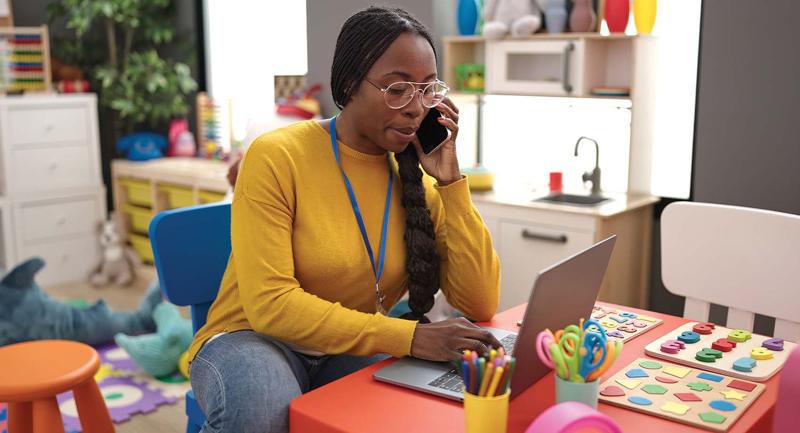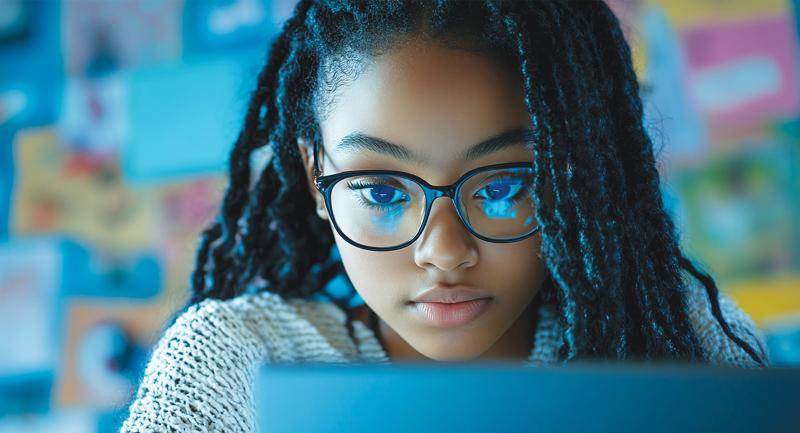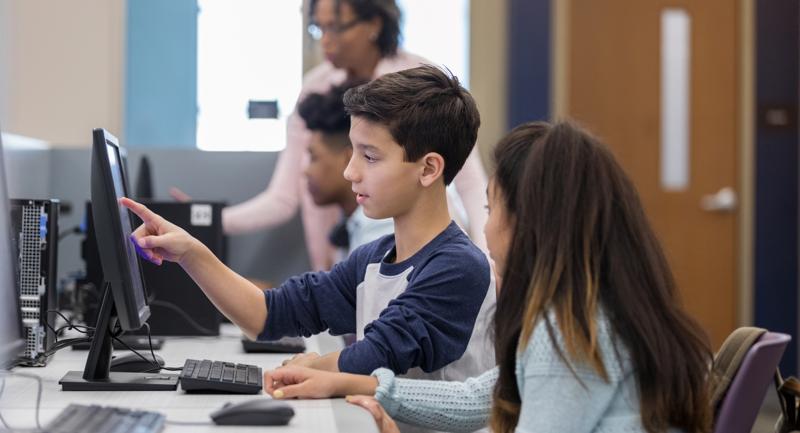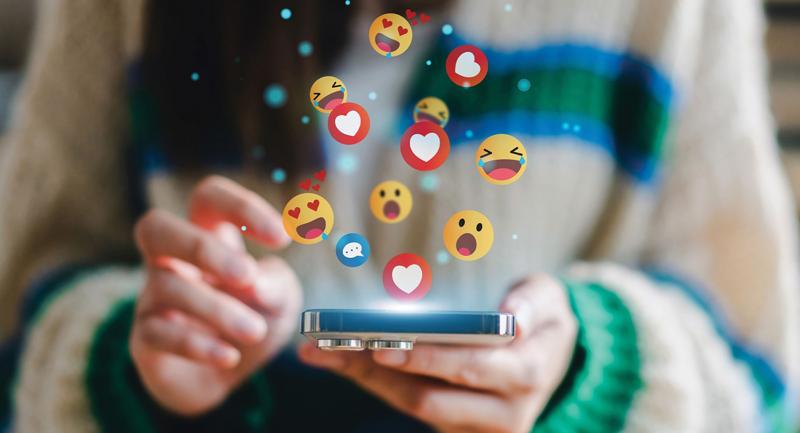What does technology integration look like after more than a year of remote learning? As schools shift back to in-person instruction, there are certain aspects of remote learning worth holding onto. From the use of digital tools to foster collaboration to the quick availability of presentation and publishing programs, some components of online teaching and learning have a place in traditional classroom settings.
Of course, many teachers were using technology to help accomplish learning goals well before the pandemic. But the wider adoption of tech-infused instructional practices has put all members of a school community in a position to have deeper conversations around technology integration than might have felt possible in the past. Remote settings this past year have given more classroom teachers and school administrators context and experience with how digital tools can facilitate teaching and learning.
During the COVID-19 pandemic, we've often heard calls to "get back to normal." Both you and your students might be ready to embrace learning experiences that weren't possible when learning at home, such as hands-on learning activities with supplies only a school environment can supply.
There are many aspects of in-person instruction well worth returning to. In shared physical spaces for collaborative learning, students can move around a room and have a better sense of nonverbal cues and body language as they work together. However, this is also a moment to make changes and to let go of "best practices" that aren't actually working. We can also incorporate the practices from digital classrooms that students loved or those we know had a positive effect on student engagement. The opportunities for online discussions, collaboration between students, and online publication and celebration of student work have increased greatly.
Your "tech tool belt" has probably grown this past year to include new apps and websites, so a shift back to in-person instruction must include reflection about which tools to keep and which ones to toss aside. Here are three lesson-planning tips for strategic, intentional technology integration.
1. Use Thoughtful Curation for In-Class Resources
Handpicking resources is not a novel idea, but digital tools can make it easier to locate and share resources with students. The quality of digital resources available for students varies greatly, with many options for video, audio, and text-based resources. The best resources for your own classroom or group of students might be different than the best resources for another group—even if the subject matter or course goals are identical on the surface. The combination of determining individual students' needs with a search for high-quality resources is what curation is all about.
I often use the phrase "tasks before apps" when having this conversation with educators, meaning you should first take a moment to think about your primary goals for sharing a resource with your students. Goals might include providing background information, introducing new vocabulary, or making a connection between a high-interest topic and personal experience. Then, consider the type of media available and why something like a podcast episode, explainer video, or online current events article might be the best fit. As you lesson plan this year, you might decide to post two or three different resources for students, based on their needs, in an online space. For example, if you know your students are often talking about what is happening in the world or in the news, pulling a current events article from Newsela and using that text to explore an ELA topic (instead of the passage you've used in years past) is a great way to leverage media available through an Internet search and pique students' growing curiosity. Or, before a lesson, you might search through TED-Ed's website or a favorite YouTube channel for a video that will introduce a topic for an upcoming lesson. A key piece of an effective curation strategy is making sure the resources you share with students are well-organized and easily accessible for everyone. You can create a single place to keep resources and links organized in a platform where students access shared content, such as a Schoology collection or in the "Materials" section of Google Classroom.
An open-ended creation tool, like Adobe Spark, Book Creator, Buncee, or MS Sway, lets students create a product reflecting their learning and gives them a blank canvas as creators to make their own movies, websites, or podcasts. I sometimes think of these spaces as an opportunity to "choose your own adventure." Both teachers and students can craft a unique experience inside such spaces to demonstrate their learning. Although each creation tool employs different ways to have students show what they know, these tools usually include an option for students to record audio or use a voice-to-text feature that turns a recording into a typed paragraph. Some (like Seesaw and Flipgrid) also have features like video recording and the ability to draw an illustration or annotate a picture or piece of text. These types of tools are perfect for differentiating learning experiences for students and can help level the playing field for kids who shine when given the option to share their learning in nontraditional ways.
Giving students time to think deeply about their learning experience is a pre-COVID best practice that should stay, but you might embrace even more ways for them to structure that reflection and build skills in the upcoming school year. We'll want to hold onto the student choice that's often inherent in distance learning. A student who is hesitant to stand up and speak in front of their classmates might now prefer the option to share an idea with a video recording tool like Flipgrid. Or, instead of returning to weekly multiple-choice quizzes that limit student responses, formative assessment could involve a routine for students to respond to open-ended questions with their choice of a text, video, or audio.
I saw many students thrive this past year when given more options and support for sharing their learning in digital spaces. I worked with a student who used Book Creator to create an e-book reflecting on her reading experience. In the past, a composition notebook might have been the only place for her to jot down a summary or lingering questions, but this space gave her more options to respond and an extra layer of creativity, and it made it easy for me to see her work in real time, even though we were connecting virtually and miles apart. Another reason to incorporate open-ended creation tools into your lesson planning is the ease and time-saving efficiency of using the same tool for multiple projects throughout the school year. If you are planning as a grade-level team or department, you might look at the curriculum map for your year together and decide what types of activities you will revisit more than once. Instead of introducing one tool in September for a project and another tool in January for a similar project, you can choose a tool that is flexible enough to appear in multiple lessons.
One of my favorite examples from this year is Google Jamboard, a free whiteboard space that students can use individually or to collaborate with their peers. They have options to search for images or add virtual sticky notes, text, and annotations. They can brainstorm, create mind maps, and discuss ideas with classmates. A consistently used digital space also provides the ability to access notes, templates, and supporting resources from multiple devices, easily color code, and add links to additional resources. Not to mention, if this fall your school has students who are learning at home as well as in the physical classroom, everyone can access the same Jamboard space at the same time. In addition to the collective knowledge shared among your colleagues over the past year, you may have found that you more regularly looked beyond your school for support and inspiration.
3. Find a Faraway Partner-in-Tech
The use of video conferencing tools like Zoom, Microsoft Teams, and Google Meet has skyrocketed in the past year. Although you probably find that your "Zoom fatigue" is at an all-time high right now, you might want to consider using video conferencing in new ways during the upcoming school year, especially if you resume in-person instruction full-time.
In addition to tapping the collective knowledge shared among your colleagues over the past year, you may have found that you more regularly looked beyond your school for support and inspiration. Perhaps you found a fellow 9th grade teacher on Instagram and conversed with them about how to support your biology students' online lab simulations, using ideas no one else in your own school had explored yet. Or maybe you connected with a teacher in a Facebook group who also uses Seesaw to organize differentiated assignments.
I suggest finding one or more faraway "partners-in-tech" for brainstorming and sharing ideas throughout the year, if you don't already have them. Your partners-in-tech could be educators you have known for years or people you first connected with on Clubhouse or Twitter. A partner-in-tech can serve as an accountability buddy, especially if you are both committed to trying out something new and want weekly check-ins, or as a fellow lesson planner, or as someone to bounce ideas off of while addressing common or complimentary goals for tech-friendly instruction. Though these partnerships might have formed because of distance learning, they don't have to disappear as you resume in-person instruction. You can maintain extended professional cohorts, using virtual connections, to complement partnerships you have with your own colleagues.
Your "tech tool belt" has probably grown this past year to include new apps and websites, so a shift back to in-person instruction must include reflection about which tools to keep and which ones to toss aside.
The past year has posed many serious challenges for educators—and nobody would want to return to those circumstances. But our imposed reliance on technology has also presented us with the chance to plan with intentionality and ensure students have an opportunity to explore essential, tech-friendly learning experiences. Let's not squander the opportunity.
Reflect and Discuss
What are the most practical tools you added to your "tech tool belt" this year? How might you incorporate them into in-person learning?
What's the most valuable lesson you've learned about how to apply technology to teaching practices this year?
In what ways might a district harness educators' collective learning and use of pandemic-era technology to implement best practices across the school building?








